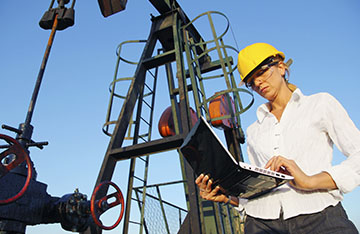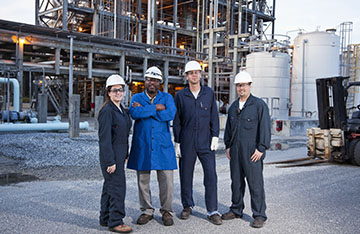API Publishes Two Updated Standards for Underground Natural Gas Storage
The American Petroleum Institute today released two second-edition standards for natural gas storage in underground salt caverns and depleted hydrocarbon and aquifer reservoirs to help ensure a safe and reliable energy supply.
“Underground storage of natural gas is a vital part of natural gas energy infrastructure, allowing the industry to maintain a steady supply to meet changing consumer demands. These updated standards help ensure underground storage facilities are designed, maintained and operated at the highest level, while advancing health, safety and sustainability in the communities where we operate,” said API Senior Vice President of Global Industry Services Anchal Liddar.
API Recommended Practice (RP) 1170, Design and Operation of Solution-mined Salt Caverns Used for Natural Gas Storage, 2nd edition, provides guidance for salt cavern facilities used for natural gas storage. The standard focuses on facility geomechanical assessments, cavern well design and drilling, risk management, solution mining techniques and operations.
API Recommended Practice 1171, Functional Integrity of Natural Gas Storage in Depleted Hydrocarbon Reservoirs and Aquifer Reservoirs, 2nd edition, outlines storage well, reservoir and fluid management for functional integrity in design, construction, operation, monitoring, maintenance and documentation practices. The standard applies to natural gas storage in depleted natural gas and oil reservoirs as well as aquifer reservoirs.
The second edition of RP 1170 incorporates associated requirements for risk management, aligning the standard with RP 1171.
The first editions of RP 1170 and RP 1171 are incorporated by reference in the Pipeline and Hazardous Materials Safety Administration’s underground natural gas storage regulations and have become the basis for inspections at the federal and state level.
More than 500 salt caverns and depleted hydrocarbon and aquifer reservoirs in the United States safely store and then deliver natural gas through our nation’s pipeline infrastructure to consumers. The practice, which dates back decades, allows natural gas to be stored when extracted, and released to pipelines, local distribution companies, producers and shippers based on variable consumer demand across seasons, days and even hours.
The current global energy crisis proves that it is more important than ever to advance solutions that ensure continued access to affordable, reliable energy while tackling the climate challenge. The U.S. natural gas and oil industry has made significant progress in reducing carbon emissions to near generational lows, and increased use of natural gas has contributed to a 24% drop in power sector carbon emissions since 2012 – outpacing the reduction targets outlined in the Clean Power Plan. As populations grow and economies expand, the world will demand more energy, not less, and industry will continue to play a foundational role in the global energy mix for decades to come.
The U.S. is the world’s largest producer of natural gas, and U.S. proved reserves of natural gas have increased nearly every year since 2000 due to advancements in natural gas exploration and production technologies. According to the EIA, while U.S. natural gas consumption is expected to average a record 86.6 Bcf/d in 2022, steady gains in drilling activity have boosted U.S. natural gas production to near record highs, thus ensuring a well-supplied domestic market while simultaneously meeting rising global liquefied natural gas (LNG) demand.
API represents all segments of America’s natural gas and oil industry, which supports more than 11 million U.S. jobs and is backed by a growing grassroots movement of millions of Americans. Our approximately 600 members produce, process and distribute the majority of the nation’s energy, and participate in API Energy Excellence®, which is accelerating environmental and safety progress by fostering new technologies and transparent reporting. API was formed in 1919 as a standards-setting organization and has developed more than 800 standards to enhance operational and environmental safety, efficiency and sustainability.





